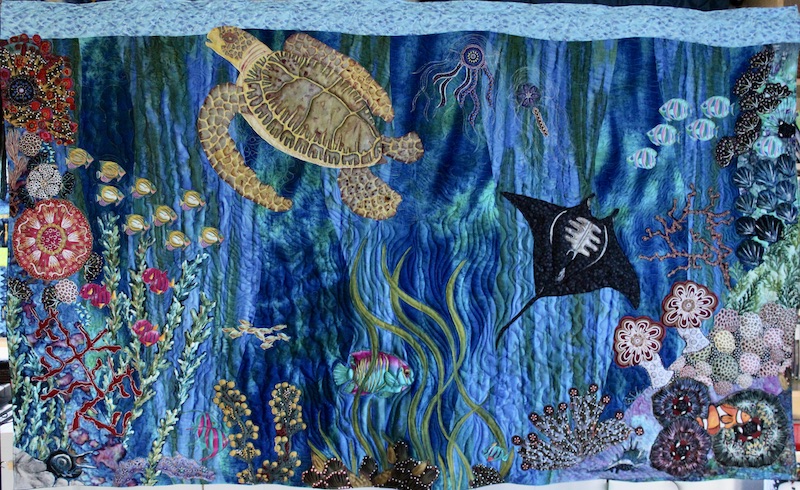Created for the Quilt for Change Water is Life exhibit, this quilt highlights the effects of global warming on coral reefs. As sea temperatures rise, coral reefs are being affected. So many coastal areas rely on the abundance of sea life for food. Reefs also serve as protection in major storms and provide critical science for medicines. We must protect our reefs and oceans! “Water is Life” was sponsored by the US Mission to the United Nations in Geneva to raise awareness on the importance of clean water to women and girls around the world.
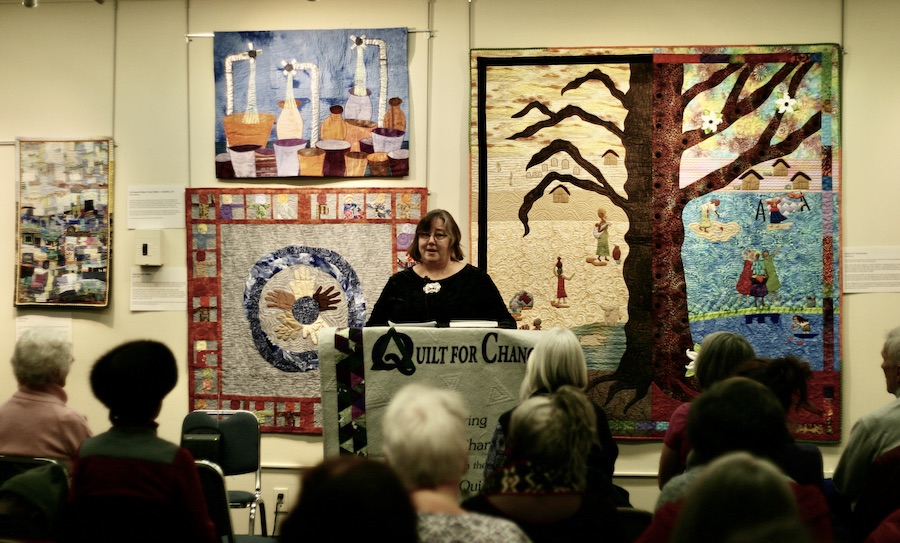
The quilt started with the turtle. My husband, Dick, was posted as the Public Affairs Officer at the U.S. Embassy in Muscat, Oman. Oman boasts one of the largest sea turtle nesting sites in the world. During our three-year tour in Oman, we went camping regularly and watched the turtles come up on the beach at night to lay their eggs – huge green sea turtles the size of sandboxes. We also loved to visit a small beach in Muscat where there were two turtles that would let us come quite close when snorkeling. Dick worked with local naturalists and scientists to preserve the nesting areas and track the turtles. We have been drawn to sea turtles ever since, perhaps because their expressive eyes give the sense that they are ancient and wise.
I painted my first turtle from my own drawing in a class at Houston with Hollis Chatelain. I loved the way he came out when wet, but as he dried he lost his vibrancy. I went on to paint other turtles using Tsukineko inks and they came out more intensely colored, but I still loved my first turtle. I decided to go back over him with fabric markers to sharpen and darken the image and was very pleased with the result.
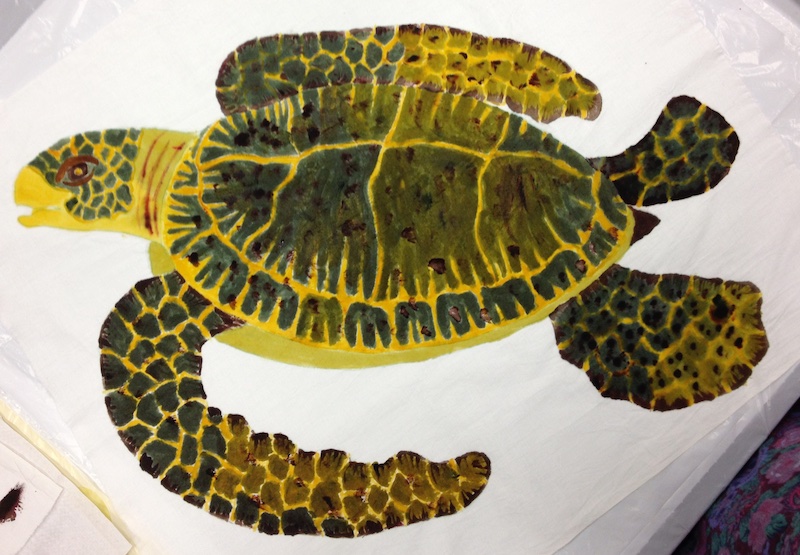
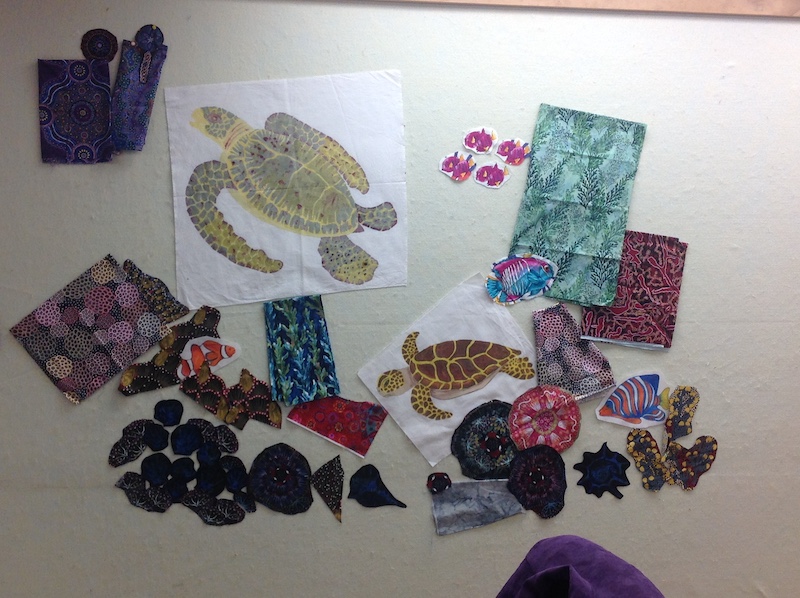
Next I began with a small study. To form the watery background I made curved horizontal cuts to create a feeling of currents of water moving horizontally. I built up the sides with vertical angles to add some coral reef flora and fauna to frame the green turtle.
Now that my study was complete, it was time to work on the larger piece and give my big turtle a home. This time I pieced the water vertically. I can’t say why, but it felt better to have the water rising from the bottom up. I decided to go big and the piece ended up 72 inches wide and 43 inches high. That was a lot of space to fill! I got creative in my sea creatures, fussy-cut schools of fish from commercially printed fabric and added a sting ray and jelly fish (quilted with metallic silver thread). It was so much fun!
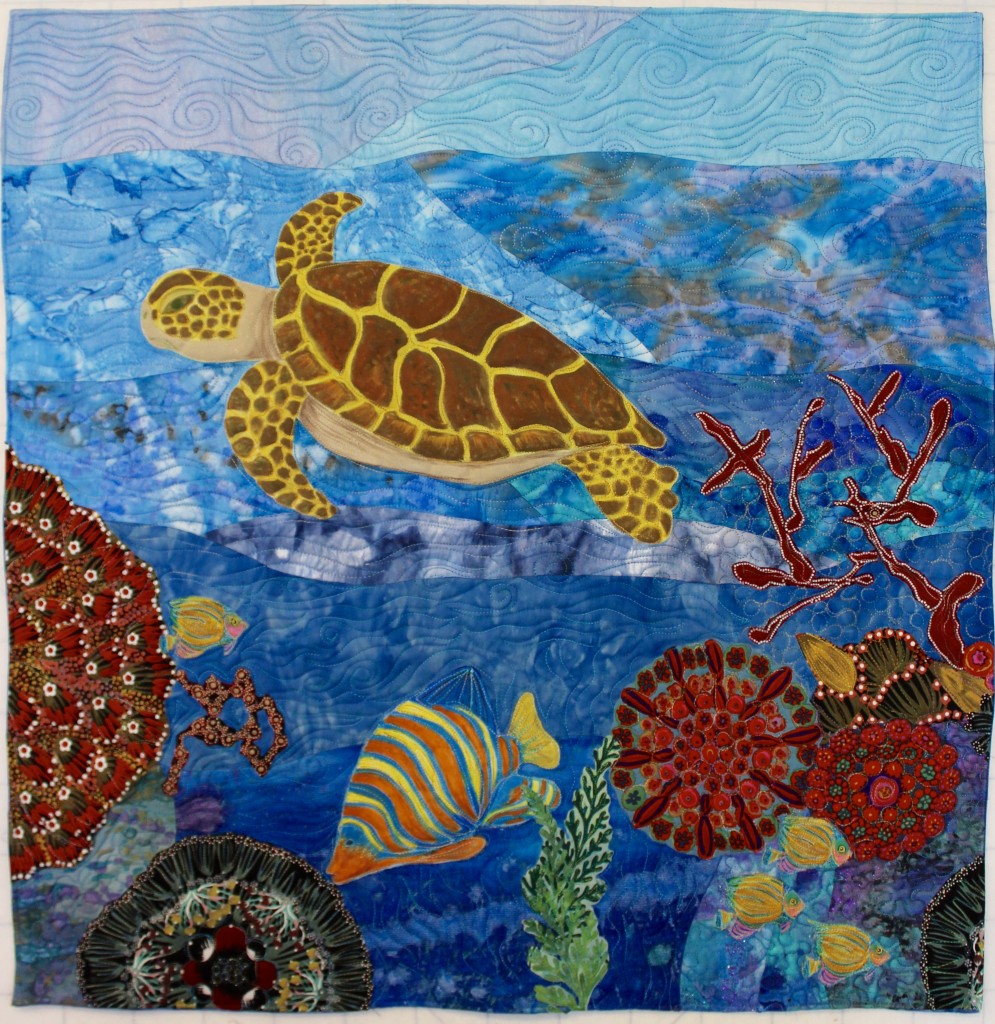
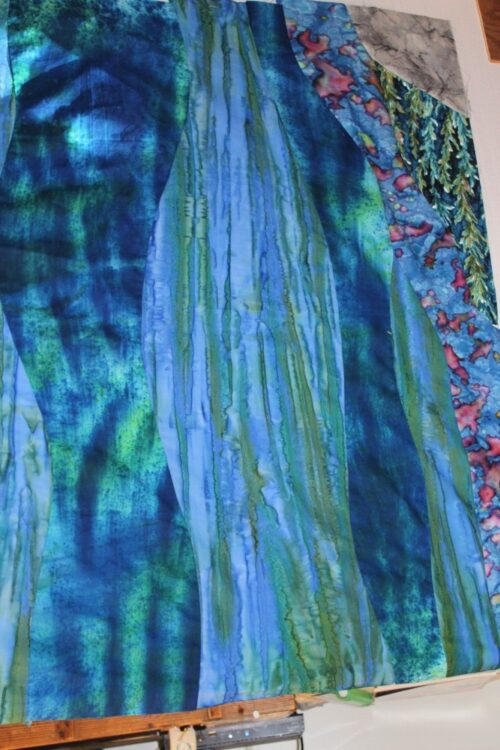
For years I have been collecting Australian fabrics based on aboriginal designs because they reminded me of coral reef creatures – sea anemones, brain corals, coral fans, even sea cucumbers! I fussy- cut shapes and applied them using using misty fuse. The addition of a brightly colored fish added interest and balance. I then trapuntoed the large shapes to make them more three dimensional. Finally, I added more detail with fussy-cut fish and with machine quilting, forming swirling water lines and bubbles.
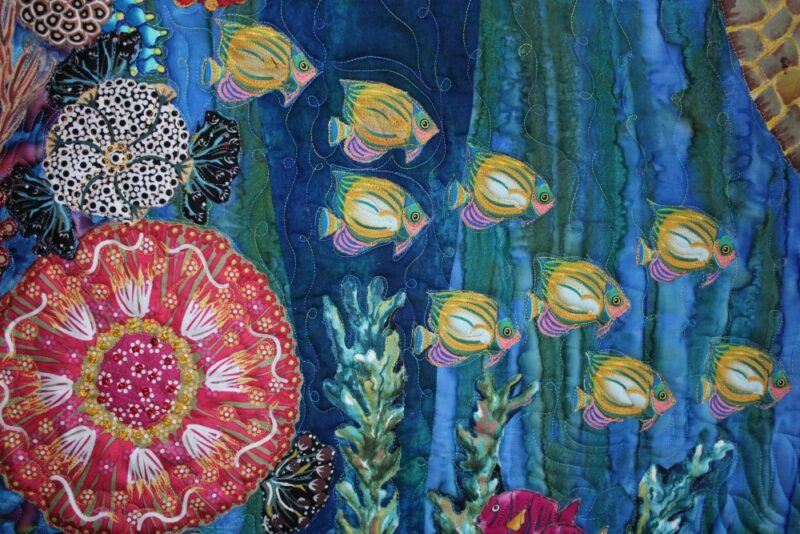
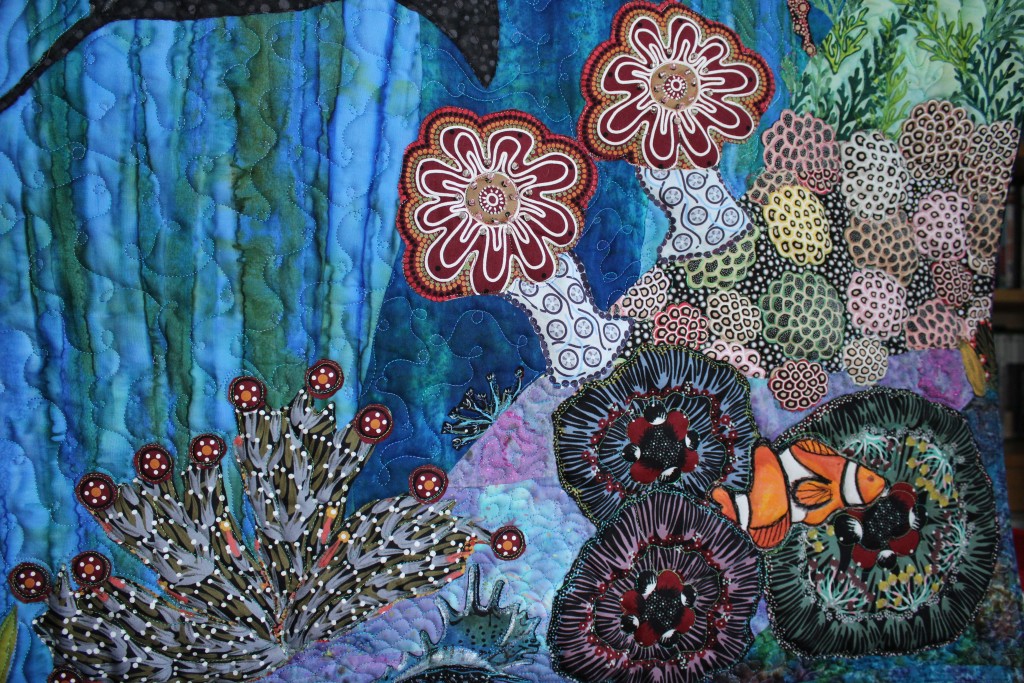
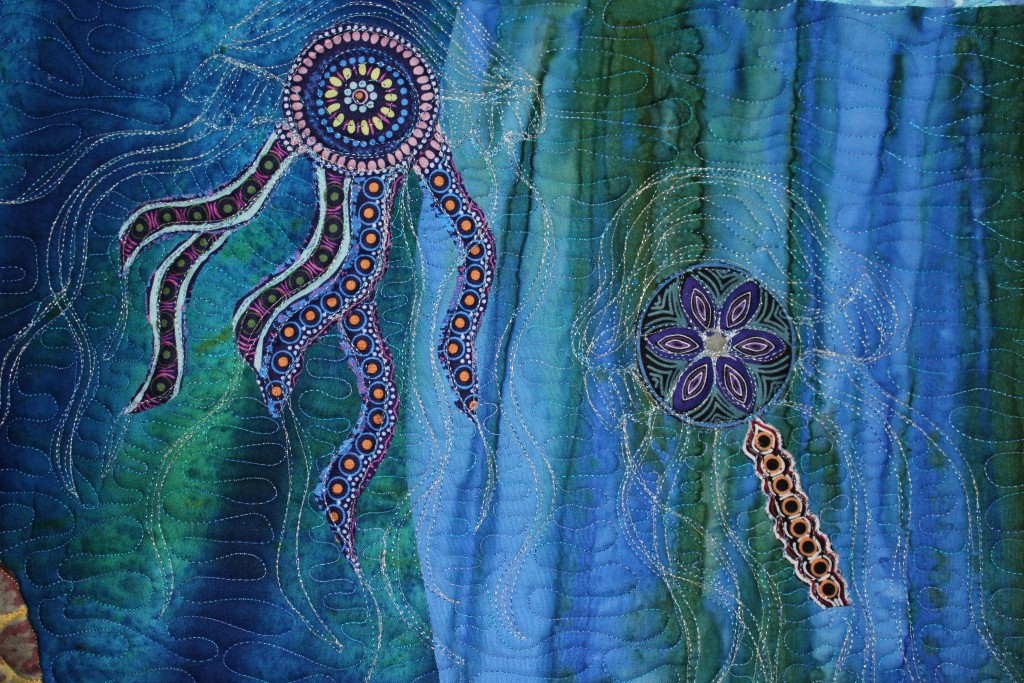
Bounty of the Seas was exhibited as part of the Quilt for Change organized “Water is Life” exhibit. It debuted at the Palais des Nations in Geneva, Switzerland, then traveled to the Frascati Gallery in Rome, Italy, the Houston International Quilt Festival, the New England Quilt Museum, and seven quilt festivals with the Mancuso Quilt Festival and the Human Rights Gallery at Kean University. The quilt is now in a private collection.
